As SpaceX gears up for its second Starship test flight, scheduled for Saturday local time, excitement and anticipation are high, but so too is a sense of dread. Indeed, this ambitious venture is not without its share of risks. Here are 10 major challenges and uncertainties that could impact the outcome of this critically important test.
The first launch of Starship on April 20 turned out to be a fiasco in oh so many ways, yet it’s worth noting that the flight did manage to last for nearly four minutes, attaining a height of approximately 37 miles (60 kilometres). But for such a highly experimental rocket—the largest ever to take to the skies—to last for long has to be considered a partial success. That said, stage separation didn’t unfold as planned and the megarocket entered into a fatal tumble that forced mission controllers to destroy it over the Gulf of Mexico.
Troublingly, the launch, without protective infrastructure at SpaceX’s Starbase launch facility in Boca Chica, Texas, resulted in significant damage and the widespread dispersal of debris. This prompted a pair of regulatory investigations, which resulted in dozens of corrective measures. Satisfied, the FAA issued its second Starship launch license on Wednesday.
SpaceX is looking to get back on track with the second mission, but success is no guarantee. This is no ordinary rocket; not only is it huge and heavy, it’s being designed for full reusability. Something like that doesn’t magically appear overnight. Accordingly, here are our areas of concern for Starship flight numéro deux.
Starship fails to clear the tower

This is unlikely, but not impossible. SpaceX will be doing something a bit different this time around, and different can lead to uncertainties. The Raptor ignition sequence will begin at T-minus 3 seconds, and not T-minus 8 seconds, as was the case during the first launch.
Prior to the 11-million-pound rocket taking off on April 20, it hung there for what seemed like an eternity, the result of an intentionally staggered engine start. SpaceX is presumably hoping to avoid a recurrence and limit the amount of time the two-stage megarocket can scorch the launch mount prior to taking flight. Starship is expected to lift off at T-plus 2 seconds and then attempt to clear the tower, provided the accelerated engine startup sequence works, in addition to other launch requirements.
The new water deluge system doesn’t work properly
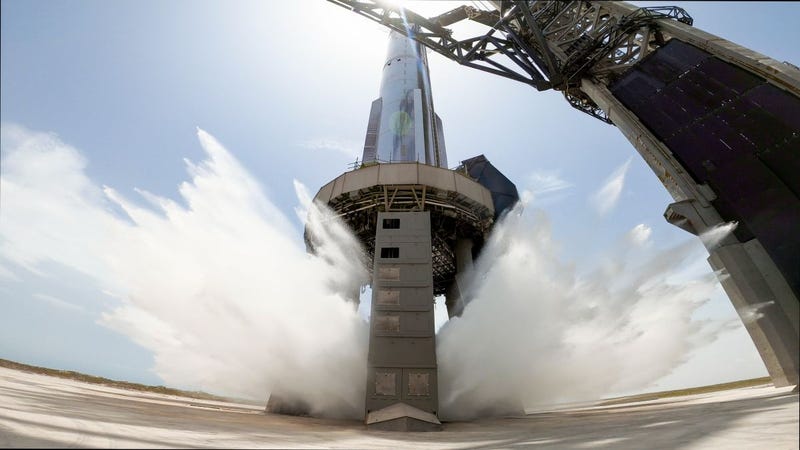
SpaceX has installed and fully tested a new water-cooled steel flame deflector that’s meant to suppress the power generated by the booster’s 33 Raptor engines at launch. Starship, the most powerful rocket ever to take flight, produces around 16 million pounds of thrust when it takes off, and that can lead to all sorts of badness at the launch mount.
For its first flight test, SpaceX didn’t properly provision for this and suffered the consequences as a result: a regulatory investigation and a delayed license for a second launch. The water deluge system, resembling a bidet for rockets, should help, but we won’t know until launch day. Should things go squirrely once more at the environmentally sensitive Boca Chica region, SpaceX could face renewed regulatory scrutiny.
The rocket’s steering goes wonky

Among many new changes, SpaceX will be testing a new electronic thrust vector control system for the booster’s Raptor engines. Vector control is a mechanism used in rockets to control the direction of the thrust, and hence the rocket’s flight path. The system does this by adjusting the angle of the rocket engines. Should the updated system fail, Starship could go off course, forcing ground controllers to engage the flight termination system.
Too many Raptor engines fail to ignite

During the first test flight, at least six Raptors conked out as Starship pitched downrange and flew over the Gulf of Mexico. Previously, company CEO Elon Musk said it’s not the worst thing in the world if all 33 engines fail to ignite, as the full complement is not needed to reach orbit.
Still, Raptor reliability remains an open question, and it’ll be super interesting to see how the engine array, consisting of 13 in the centre and 20 around the perimeter, behaves this time around. The Starship system is powered by the reusable Raptor engine, which employs methane-oxygen staged combustion and delivers twice the thrust of the Falcon 9 Merlin engine.
Starship doesn’t survive Max Q
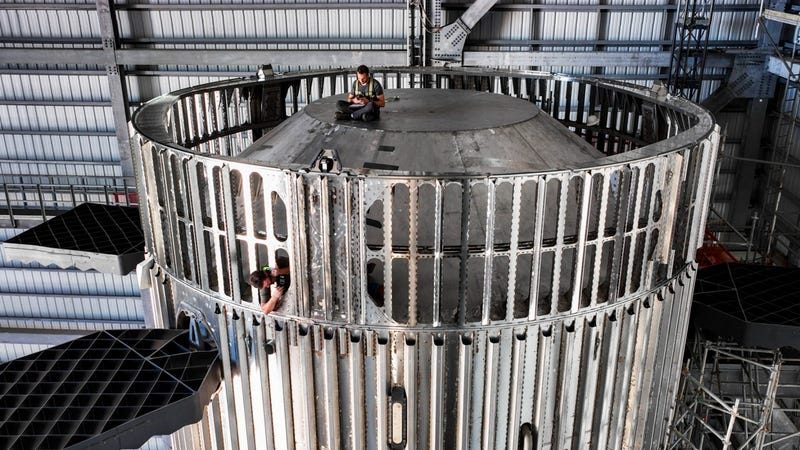
The megarocket breezed through Max Q during its inaugural flight and is expected to repeat this performance during its next launch. If there’s any reason for concern, it’s that the rocket is not structurally the same as it was during the previous launch. Starship now boasts a hot staging ring, slightly raising the height of the entire structure from 394 feet (120 metres) to 397 feet (121 metres).
Max Q describes the point during the rocket’s ascent when it experiences the maximum dynamic pressure. This is a critical phase because the combination of the rocket’s velocity and the atmospheric density at that altitude exerts the greatest stress on the vehicle’s structure. With the Starship’s altered structure due to the new hot staging ring and increased height, the dynamics during this phase could be different, presenting a unique challenge for the upcoming launch. Starship is expected to reach Max Q at the 52-second mark.
Hot-staging fails
The purpose of that hot staging ring is to enable the seamless transition between stages during Starship’s ascent, allowing for the ignition of the upper stage engine while the Super Heavy booster is still firing. This technique, known as “hot staging,” is meant to reduce the time between stage separation and engine ignitions, potentially improving the efficiency and performance of the launch.
Starship was not originally designed with this in mind, so this is truly terra incognita for the company, representing the most perilous stage of the mission. Hot staging is set to commence two minutes and 41 seconds after launch. If the second flight test fails, it’ll probably be here.
The self-destruct sequence falters again
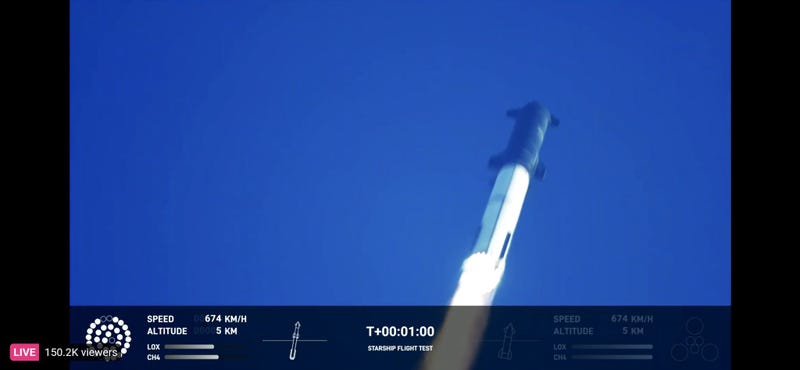
SpaceX may or may not need the flight termination system (FTS) for the second test, but failure here would not be a good look. On April 20, ground controllers sent the self-destruct command to Starship as it was tumbling, but the rocket didn’t immediately blow up. That’s not good, as SpaceX needs to demonstrate the ability to destroy the rocket quickly. FTS is crucial for ensuring public safety and adhering to regulatory standards. A reliable and responsive FTS is essential for SpaceX to maintain trust and credibility in its test programs, especially in scenarios where a malfunctioning rocket poses a potential risk to populated areas.
The Starship upper stage performs an uncontrolled reentry
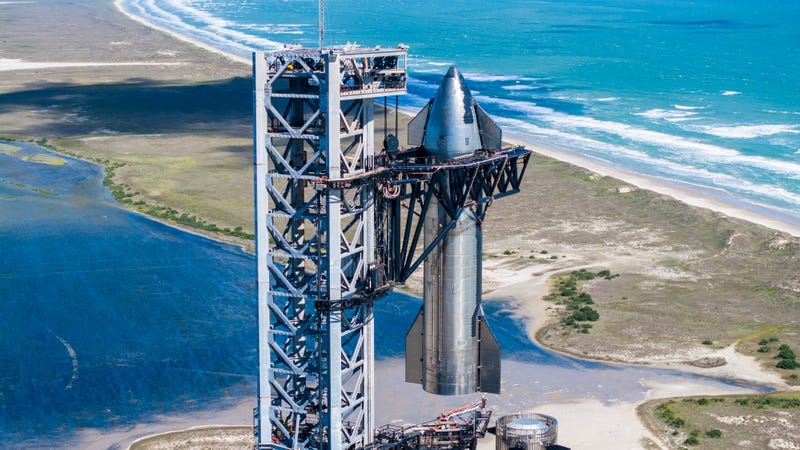
Once freed from the Super Heavy booster, the Starship upper stage, designated Ship 25 (a duplicate of Ship 24 from the first flight), will travel over the Caribbean, southern Africa, the Indian Ocean, and New Guinea. The plan is for Starship to splash down in the Pacific Ocean roughly 62 miles (100 km) off the northwest coast of Kauai, which is part of the Hawaiian archipelago.
The upper stage is powered by six Raptor engines, three of which, known as RVAC, are optimized for use in the vacuum of space. In the unfortunate event that these engines fail—or some other technological calamity—the 85-ton Starship could perform an uncontrolled reentry through Earth’s atmosphere and crash at an undesignated location.
Starship’s protective tiles get shredded
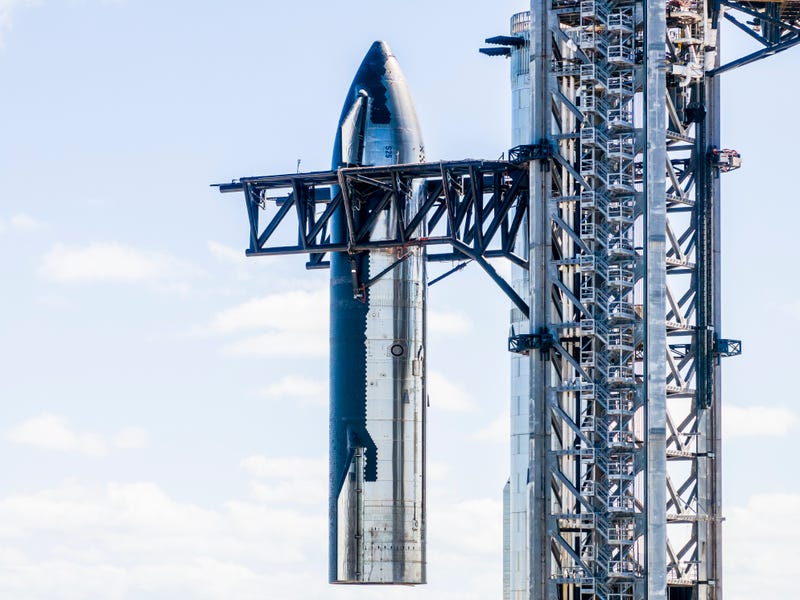
A big unknown is how SpaceX’s heat shield tiles will work during atmospheric reentry. According to Space.com, Starship will reach a velocity of 17,500 miles per hour (28,160 km/hr) and fly no higher than 150 miles (250 km) above the surface. Starship’s Thermal Protection System (TPS) consists of approximately 18,000 hexagonal ceramic tiles covering one side of the spacecraft. These tiles are designed to endure extreme temperatures exceeding 2,500 degrees Fahrenheit.
During its reentry, Starship will employ the “belly flop” maneuver, positioning itself horizontally to maximize atmospheric drag and effectively slow down, with the spacecraft’s heat shield tiles facing forward to absorb and withstand the extreme reentry heat. This orientation, combined with the controlled adjustment of its aero surfaces, or flaps, should allow for a precise and safe descent before it transitions back to a vertical position for landing. SpaceX has conducted lab tests on the tiles, but this flight, if successful, will serve as their true test in real-world conditions.
And everything between

These are some of the more obvious ways in which the mission could go sideways, but there are likely many other potential points of failure, some known and some unknown. SpaceX’s approach to testing anticipates the possibility of failure and makes it a part of the development process. Each test flight, successful or not, yields valuable data that allows the company to refine its designs and strategies.
So heading into the second test flight, the big question isn’t really if it’ll be a total success, but more about how it might fail. This will help to figure out what needs tweaking and set things up for the third go-around.
